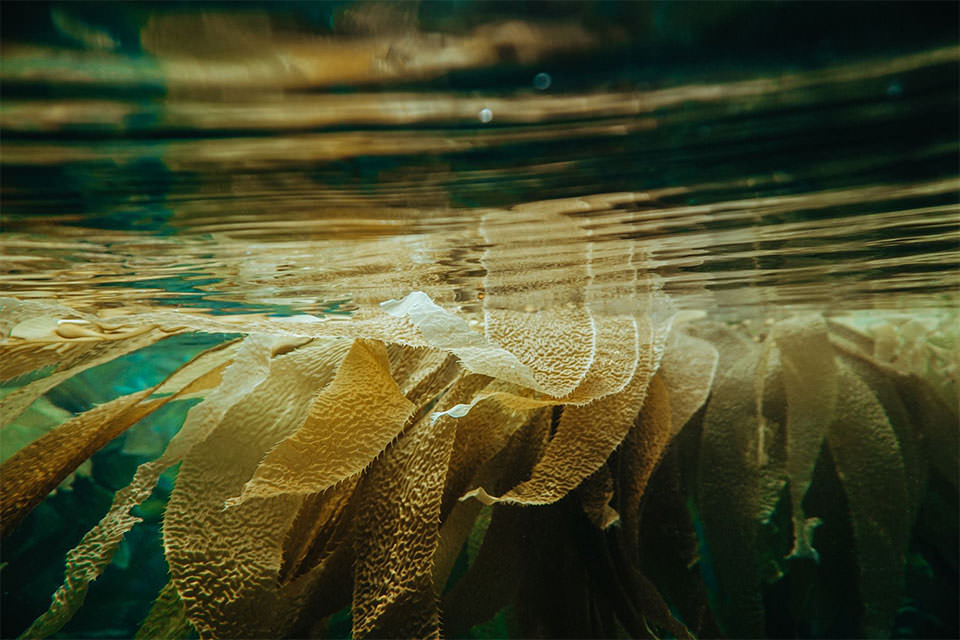How do people use kelp?
Kelp is used to make many products: toothpastes, shampoos, salad dressings, puddings, cakes, dairy products, frozen foods, and even pharmaceuticals.

Kelp farms allow growers to make use of existing aquaculture resources in their areas.
Algin, an emulsifying and bonding agent, is extracted from kelp and used in these products. Kelp is also used as food on mollusk farms. Between 100,000 and 170,000 wet tons of kelp are harvested from California waters each year.
Kelp forests are extremely biologically productive habitats for a huge range of sea creatures including fish, urchins, sea otters, sea lions, and even some whales. Because of this, kelp forests are critical for fishing and recreation industries.
Unfortunately, overfishing disrupts the balance of kelp forests by removing predators and allowing plant-eating populations to explode and overeat the kelp, destroying the forests. Pollution, such as sediment runoff and industrial waste, also contributes to the destruction of kelp forests.
Today, many kelp forests are located in marine protected areas and are studied by NOAA scientists. Kelp forests are monitored for kelp size and distribution, physical oceanic conditions, and associated life. The more that we discover about these amazing habitats, the better they can be preserved and strengthened.
Social